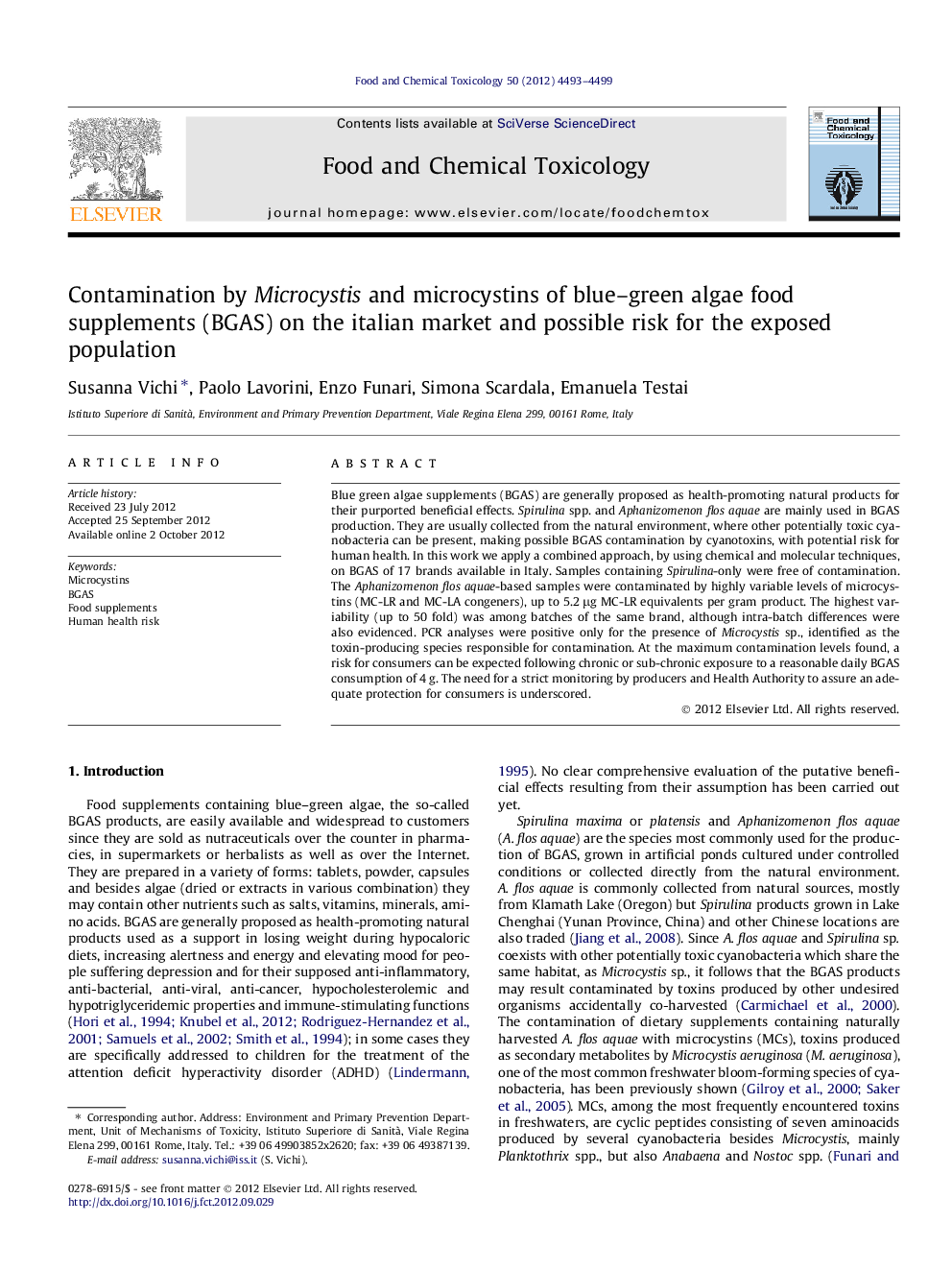| Article ID | Journal | Published Year | Pages | File Type |
|---|---|---|---|---|
| 5852060 | Food and Chemical Toxicology | 2012 | 7 Pages |
Blue green algae supplements (BGAS) are generally proposed as health-promoting natural products for their purported beneficial effects. Spirulina spp. and Aphanizomenon flos aquae are mainly used in BGAS production. They are usually collected from the natural environment, where other potentially toxic cyanobacteria can be present, making possible BGAS contamination by cyanotoxins, with potential risk for human health. In this work we apply a combined approach, by using chemical and molecular techniques, on BGAS of 17 brands available in Italy. Samples containing Spirulina-only were free of contamination. The Aphanizomenon flos aquae-based samples were contaminated by highly variable levels of microcystins (MC-LR and MC-LA congeners), up to 5.2 μg MC-LR equivalents per gram product. The highest variability (up to 50 fold) was among batches of the same brand, although intra-batch differences were also evidenced. PCR analyses were positive only for the presence of Microcystis sp., identified as the toxin-producing species responsible for contamination. At the maximum contamination levels found, a risk for consumers can be expected following chronic or sub-chronic exposure to a reasonable daily BGAS consumption of 4 g. The need for a strict monitoring by producers and Health Authority to assure an adequate protection for consumers is underscored.
⺠BGAS food supplements consisting of Aphanizomenon sp. and Spirulina sp. are widely used as 'natural' products. ⺠Contamination by cyanotoxins in BGAS was detected by combining chemical and molecular techniques. ⺠All the Aphanizomenon flos aquae-based samples were contaminated by highly variable levels of microcystins (MCs). ⺠MCs are cyclic heptapeptides inducing acute and long term hepatotoxicity and known to be tumor promoters. ⺠Levels found can be associated to a potential risk for consumers health.
